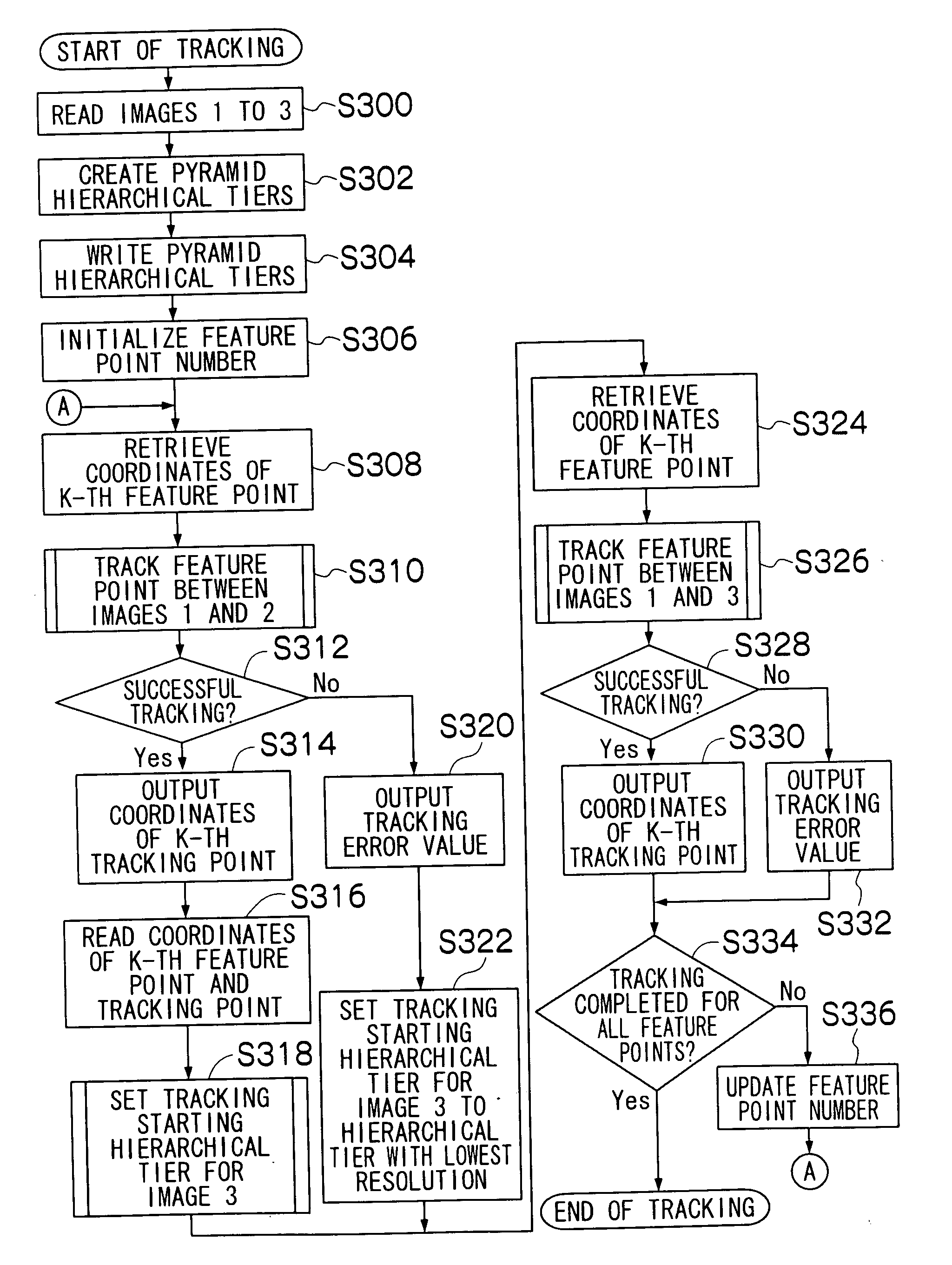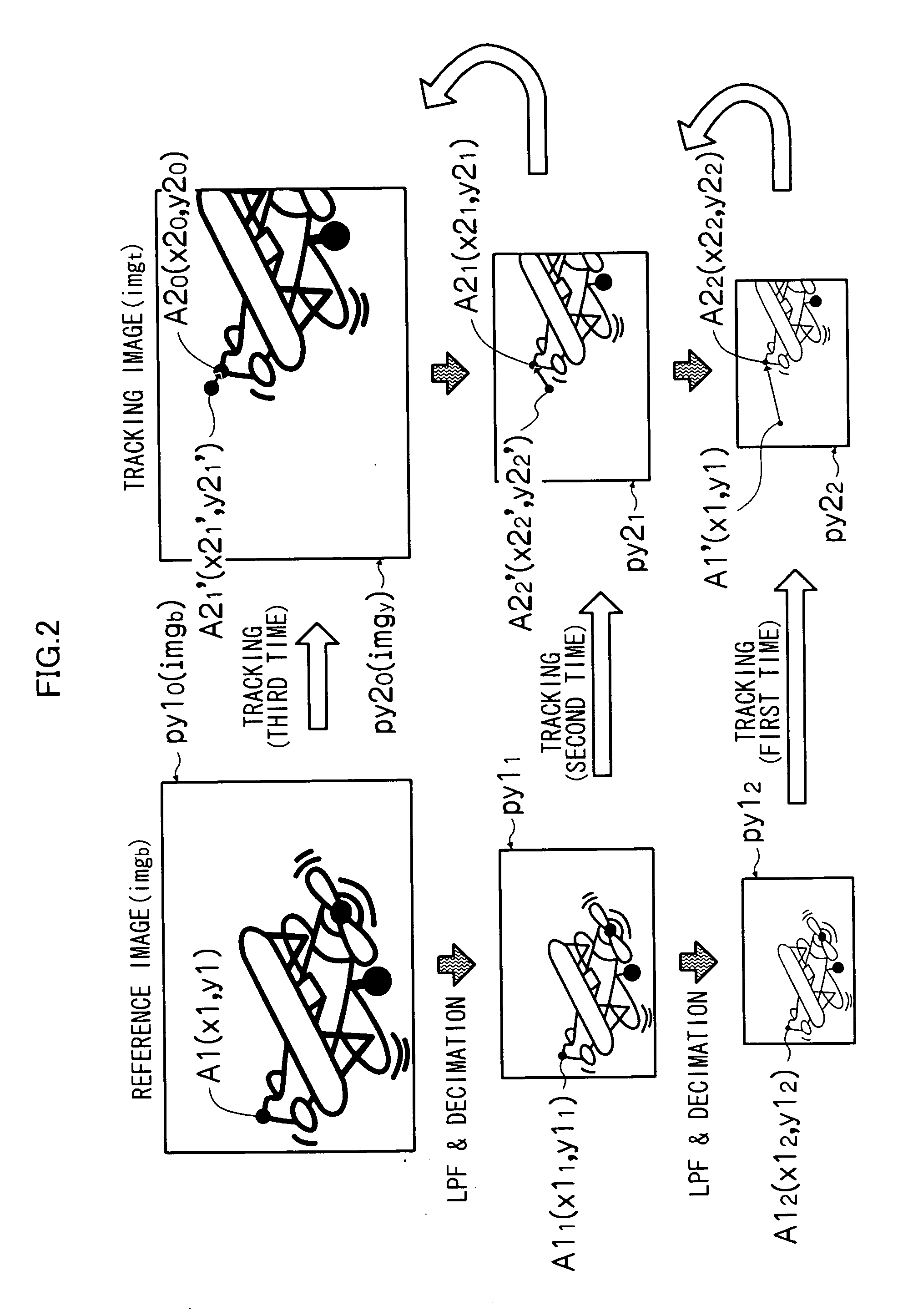Image processing apparatus and image processing method
a technology of image processing and image processing, applied in the field of image processing apparatus and image processing method, can solve the problem of lowering the accuracy of the calculation of the displacement of a subj
- Summary
- Abstract
- Description
- Claims
- Application Information
AI Technical Summary
Benefits of technology
Problems solved by technology
Method used
Image
Examples
first embodiment
[0073]A first embodiment of the present invention is adapted so as to determine the easiness of convergence of the displacement amount of a tracking point corresponding to a feature point when repeatedly detecting the tracking point in a hierarchical tier image in a predetermined hierarchical tier, and change the criterion for determining whether or not the displacement amount converges, which is employed for repetitive tracking point detection for the next hierarchical tier image, according to this easiness of convergence.
[0074]FIG. 1 is a block diagram illustrating an image processing apparatus according to the first embodiment of the present invention.
[0075]A main CPU 12 is an overall control unit that controls the operation of an entire image processing apparatus 10 according to the present embodiment. The main CPU 12 performs various kinds of arithmetic operations including, for example, the control of input / output of image data to / from an image memory 14, the setting of the hi...
second embodiment
[0126]Next, a second embodiment of the present invention will be described. In the below description, a description of the components similar to those in the first embodiment will be omitted.
[0127]The present embodiment is adapted so as to determine the easiness of convergence of the displacement amount of a tracking point when repeatedly detecting the tracking point in a hierarchical tier image in a predetermined hierarchical tier, and determine the next tracking point detection target hierarchical tier according to this easiness of convergence.
[0128]FIG. 7 is a block diagram illustrating an image processing apparatus according to the second embodiment of the present invention. As illustrated in FIG. 7, an image processing apparatus 10 according to the present embodiment includes an automatic hierarchical tier setting unit 30.
[0129]Hereinafter, an image processing method according to the present embodiment will be described with reference to the flowcharts in FIGS. 8 to 10. FIG. 8 ...
third embodiment
[0148]Next, a third embodiment of the present invention will be described. In the below description, a description of the components similar to those in the first embodiment will be omitted.
[0149]The present embodiment is adapted so that when feature point tracking is performed for three images, that is, an image 1, an image 2 that is temporally older than the image 1, and an image 3 that is temporally newer than the image 1 (for example, images successively taken at substantially-equal time intervals, such as, for example, continuous shots or motion picture frames, or images successively taken while the apparatus being panned or tilted at substantially-equal intervals), the number of hierarchical tiers in pyramids (a reference pyramid and a tracking pyramid) created when performing tracking point detection between the image 1 and the image 3 is set according to the distance between the feature point and a tracking point (the movement amount of the feature point) obtained by perform...
PUM
 Login to View More
Login to View More Abstract
Description
Claims
Application Information
 Login to View More
Login to View More - R&D
- Intellectual Property
- Life Sciences
- Materials
- Tech Scout
- Unparalleled Data Quality
- Higher Quality Content
- 60% Fewer Hallucinations
Browse by: Latest US Patents, China's latest patents, Technical Efficacy Thesaurus, Application Domain, Technology Topic, Popular Technical Reports.
© 2025 PatSnap. All rights reserved.Legal|Privacy policy|Modern Slavery Act Transparency Statement|Sitemap|About US| Contact US: help@patsnap.com



